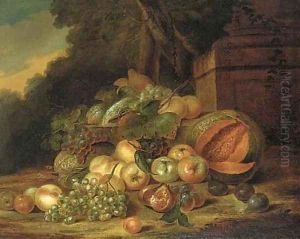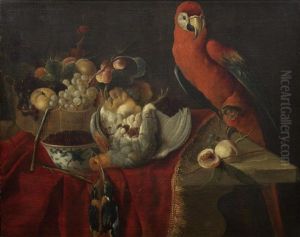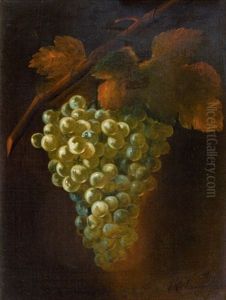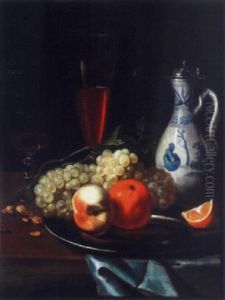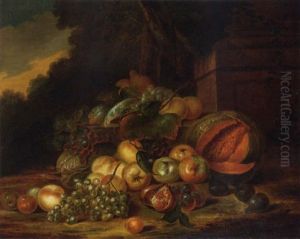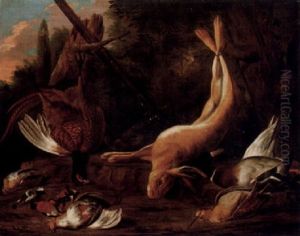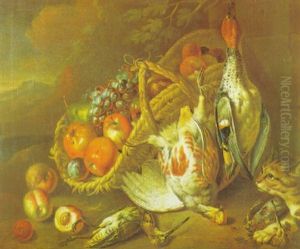Robert Van Der Myn Paintings
Robert van der Myn, also known as Robert van der Min, was an 18th-century portrait painter who worked in England. Born in 1723 in the Netherlands, van der Myn came from an artistic family; his father was the artist Herman van der Myn, who had a significant influence on his son's career. His family's artistic lineage can be traced back to his grandfather, another accomplished painter named Isaac van der Myn. This artistic heritage provided Robert with an environment steeped in artistic tradition and technique from an early age.
Robert van der Myn moved to England, where he worked primarily as a portraitist. He settled in London, and while his name might not be as widely recognized as some of his contemporaries, he was quite successful in his time, catering to the demands of the British gentry and nobility. His style was characterized by a strong grasp of his subjects' likenesses and the ability to portray them with a degree of sensitivity and finesse. His work often displayed the influence of his Dutch heritage, with an attention to detail and a preference for a bright palette that was typical of Dutch painters of the period.
Despite his success, van der Myn's life and work have not been as well documented as some of his peers, and as a result, details about his personal life and the breadth of his oeuvre are somewhat limited. He is known to have exhibited at the Society of Artists in London between 1760 and 1783, which suggests that he was an active member of the artistic community during his career.
Robert van der Myn died in 1783, leaving behind a body of work that, while perhaps not revolutionary, was a testament to the skill and craftsmanship of portrait painters in the 18th century. His paintings can be found in various collections and are a valuable part of the historical record of British portraiture.
